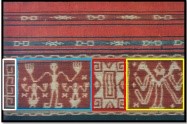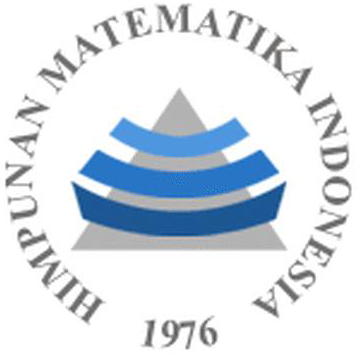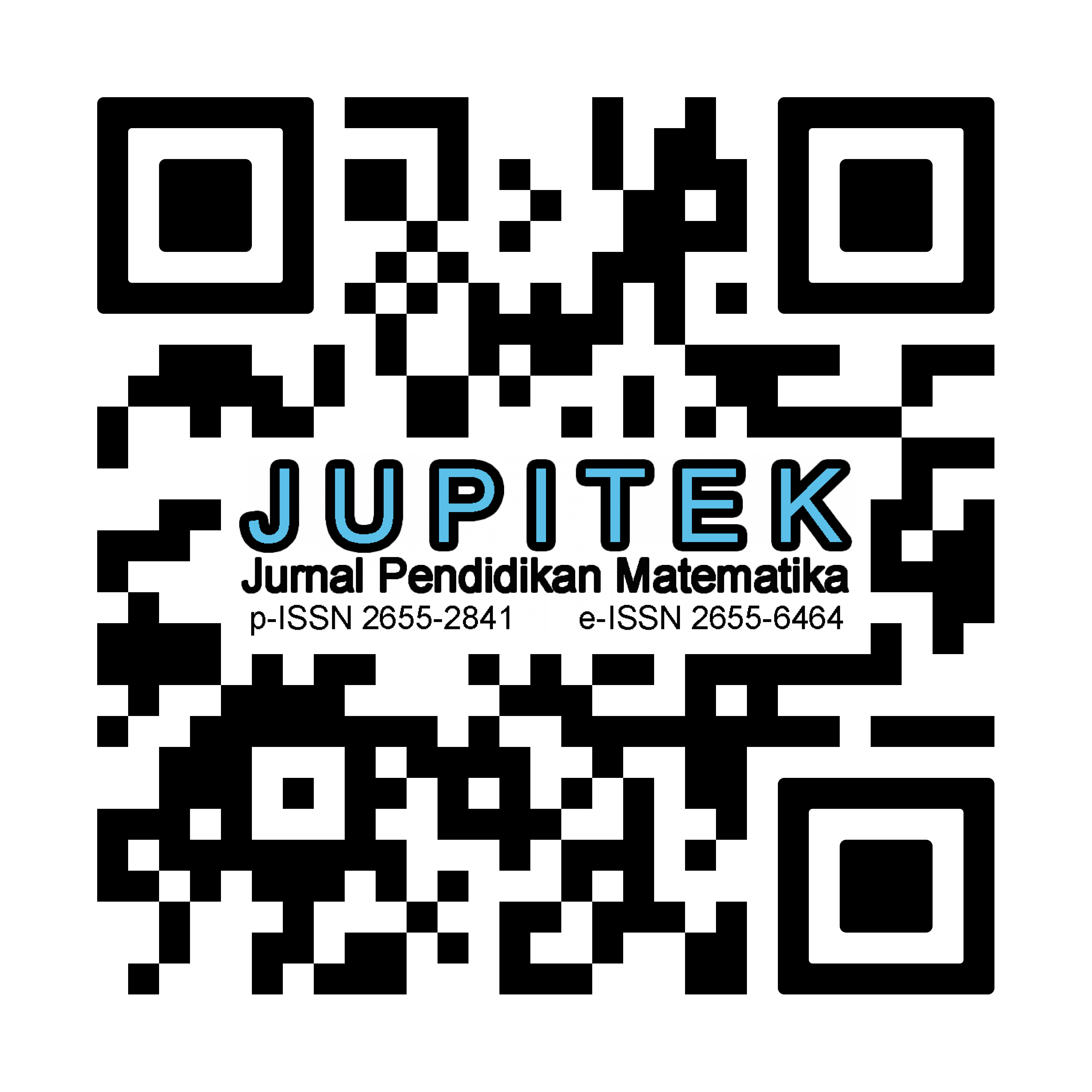DEVELOPMENT OF LEARNING DEVICES BASED ON ETHNOMATHEMATICS OF THE MEHER TRIBE WOVEN FABRICS (KISAR ISLAND) WITH REALISTIC MATHEMATICS EDUCATION APPROACH ON NUMBER PATTERN MATERIAL
Abstract
This study aimed to develop a learning device based on ethnomathematics of the Meher tribe woven fabrics (Kisar Island) with a Realistic Mathematics Education (RME) approach on number pattern material for 8th-grade students of Public Junior High School 4 Southern Islands. The learning devices developed consisted of Learning Implementation Plans (RPP), Teaching Materials (BA), and Student Worksheets (LKPD). The development model used was the 4-D model, which consisted of four stages, namely define, design, develop, and disseminate but were limited to the development stage. The device was tested for quality (valid, practical and effective). Following the validation results by the five validators, it was found that the devices developed met the validity requirements with an average score of Learning Implementation Plans (RPP) 3.5 (very good), an average score of Teaching Materials (BA) 3.3 (good), the average score of Student Worksheets (LKPD) was 3.4 (good). The average validator's general assessment was 3.3 (good). According to the practicality test of the developed devices, it was found that the developed devices were categorized as practical, with an average positive response of educators of 100% and an average positive response of students of 91.3%. The developed devices also fulfilled the effectiveness requirements by achieving a classical completeness percentage of 79.2%. The results of the study obtained the quality of the devices developed
Downloads
References
Aisyah, L., & Rohayati, S. (2018). Pengembangan Lembar Kegiatan Peserta Didik (LKPD) Akuntansi Perusahaan Dagang Berbasis Problem Based Learning Pada Kelas XI Akuntansi Di SMK Negeri 1 Surabaya. Jurnal Pendidikan Akuntansi (JPAK), 6(1).
Alam, B. I. (2012, November). Peningkatkan kemampuan pemahaman dan komunikasi matematika siswa sd melalui pendekatan realistic mathematics education (RME). In Seminar Nasional Matematika dan Pendidikan Matematika FMIPA UNY dengan tema “Kontribusi Pendidikan Matematika dan Matematika dalam Membangun Karakter Guru dan Siswa (pp. 149-164).
Andriani, L. L., Suarjana, I. M., & Lestari, L. P. S. (2017). Pengaruh Model Pembelajaran Think Pair Share Berbasis Budaya Masyarakat Lokal Terhadap Hasil Belajar PKn Siswa. MIMBAR PGSD Undiksha, 5(2).
Chisara, C., Hakim, D. L., & Kartika, H. (2019). Implementasi pendekatan Realistic Mathematics Education (RME) dalam pembelajaran matematika. Prosiding Sesiomadika, 1(1b).
Fauzi, A., Rahmatih, A. N., Sobri, M., Radiusman, R., & Widodo, A. (2020). Etnomatematika: Eksplorasi budaya sasak sebagai sumber belajar matematika Sekolah Dasar. JRPM (Jurnal Review Pembelajaran Matematika), 5(1), 1-13.
Feby, F. F., & Abadi, A. P. (2020). Model Pembelajaran Relating, Experiencing, Applying, Cooperating, Transferrin (REACT) Berbasis Etnomatematika. Prosiding Sesiomadika, 2(1d).
Hobri, H., & Suharto, S. (2014). Pengembangan Perangkat Pembelajaran Matematika Pada Model ‘Core’(Connecting, Organizing, Reflecting, Extending) Dengan Pendekatan Kontekstual Pokok Bahasan Peluang Untuk Siswa Sma Kelas Xi. KadikmA, 5(2).
Kartiwa, I. (2016). Peningkatan Kemampuan Berpikir Kreatif Dan Pemecahan Masalah Matematis Melalui Pendekatan Matematika Realistik (Doctoral dissertation, UNPAS).
Kuahaty, S. (2013). Kompilasi Pemikiran Tentang Dinamika Hukum Dalam Masyarakat. (Memperingati Dies Natalis ke -50 Universitas Pattimura Tahun 2013)
Lado, H., Muhsetyo, G., & Sisworo, S. (2016). PENGGUNAAN MEDIA BUNGKUS ROKOK UNTUK MEMAHAMKAN KONSEP BARISAN DAN DERET MELALUI PENDEKATAN RME. Jurnal pembelajaran matematika, 3(1).
Laurens, T. (2016). Analisis Etnomatematika dan Penerapannya dalam Meningkatkan Kualitas Pembelajaran. Jurnal Pendidikan Matematika STKIP PGRI Sumbar, 3(1), 86-96.
Laurens, T., Batlolona, F. A., Batlolona, J. R., & Leasa, M. (2017). How does realistic mathematics education (RME) improve students’ mathematics cognitive achievement?. Eurasia Journal of Mathematics, Science and Technology Education, 14(2), 569-578.
Nasution, Z. M., Surya, E., & Manullang, M. (2017). Perbedaan kemampuan pemecahan masalah matematik dan motivasi belajar siswa yang diberi pendekatan pembelajaran berbasis masalah dengan pendidikan matematika realistik di SMP negeri 3 Tebing Tinggi. Paradikma: Jurnal Pendidikan Matematika, 9(2).
Nerita, S., Hartati, Y. S., Maizeli, A., & Afza, A. (2018). Validitas handout berbasis penemuan terbimbing pada perkuliahan evaluasi proses dan hasil belajar biologi. Jurnal Penelitian Pendidikan IPA, 4(2).
Nielsen, P. (2009). Coastal and estuarine processes (Vol. 29). World Scientific Publishing Company.
Novsyah, I. R. M. A. Y. A. N. I. (2019). Pengembangan Perangkat Pembelajaran Berbasis Learning Cycle Elicit, Engagement, Exploration, Explanation, Elaboration, Evaluation, Extend (7E) Pada Sub Materi Transpor Zat Melalui Membran Sel Kelas Xi Di Sman 2 Baubau.
Palinussa, A. L. (2013). Students' Critical Mathematical Thinking Skills and Character: Experiments for Junior High School Students through Realistic Mathematics Education Culture-Based. Indonesian Mathematical Society Journal on Mathematics Education, 4(1), 75-94.
Rahmadi, F. (2015). Pengembangan perangkat pembelajaran berbasis pemecahan masalah berorientasi pada kemampuan penalaran dan komunikasi matematika. Jurnal Pendidikan Matematika, 10(2), 137-145.
Ratumanan, T. G. (2015). Belajar dan pembelajaran serta faktor-faktor yang mempengaruhinya. Yogyakarta: Pensil Komunika.
Ratumanan, T. G., & Laurens, T. (2016). Analisis penguasaan objek matematika (Kajian pada lulusan SMA di Provinsi Maluku). Jurnal Pendidikan Matematika Raflesia, 1(2).
Safrida, L. N., As’ari, A. R., & Sisworo, S. (2016). Pengembangan perangkat pembelajaran berbasis problem solving Polya untuk meningkatkan kemampuan penalaran matematis siswa materi peluang kelas XI SMA. Jurnal Pendidikan: Teori, Penelitian, dan Pengembangan, 1(4), 583-591.
Tanjung, H. S., & Nababan, S. A. (2019). Pengembangan perangkat pembelajaran berbasis masalah untuk meningkatkan kemampuan pemecahan masalah dan komunikasi matematis siswa SMA Negeri 3 Kuala Kabupaten Nagan Raya. Genta Mulia: Jurnal Ilmiah Pendidikan, 10(2).
Trilaksono, D., Darmadi, D., & Murtafi'ah, W. (2018). Pengembangan Media Pembelajaran Matematika Menggunakan Adobe Flash Professional Berbasis Literasi Untuk Meningkatkan Kreativitas Siswa. AKSIOMA: Jurnal Program Studi Pendidikan Matematika, 7(2), 180-191.
Utami, S. D., Efendi, I., Dewi, I. N., Ramdani, A., & Rohyani, I. S. (2019). Validitas perangkat pembelajaran etnoekologi masyarakat Suku Sasak kawasan taman nasional Gunung Rinjani. Jurnal Penelitian Pendidikan IPA, 5(2), 240-247.

Copyright (c) 2023 Andy Sunder Keer Dahoklory, Theresia Laurens, Anderson L Palinussa

This work is licensed under a Creative Commons Attribution-NonCommercial-ShareAlike 4.0 International License.
License and Copyright Agreement
By submitting a manuscript to Jurnal Pendidikan Matematika (JUPITEK), the author(s) certify and agree to the following terms:
- Originality and Authority: The submitting author is authorized by all co-authors to enter into this agreement. The manuscript describes original work that has not been published previously in a peer-reviewed journal, nor is it under consideration for publication elsewhere.
- Approval: Its publication has been approved by all author(s) and by the responsible authorities of the institutions where the work was carried out.
- Rights: The authors secure the right to reproduce any material that has already been published or copyrighted elsewhere.
- Licensing and Copyright: Authors retain the copyright to their work.
- License Grant: The authors grant Jurnal Pendidikan Matematika (JUPITEK) the right of first publication, with the work simultaneously licensed under the Creative Commons Attribution-NonCommercial-ShareAlike 4.0 International (CC BY-NC-SA 4.0).
- Self-Archiving: Authors are permitted and encouraged to deposit the published version of their article in institutional repositories, on their personal websites, and other academic platforms, with proper acknowledgment of its initial publication in Jurnal Pendidikan Matematika (JUPITEK).






.png)


